In Singapore, the aging population is accelerating, driving rising demands for chronic disease management and long-term care. While Western medicine excels in acute care and surgery, it often falls short in chronic disease management and rehabilitation.
Amid this shift, TCM therapies like acupuncture, tuina massage, and wellness exercises are increasingly integrating into mainstream healthcare. They have gained recognition from both the government and experts, becoming a hot topic of societal discussion.
TCM is no longer merely a symbol of traditional culture; it has become a vital medical supplement in the face of the silver wave, offering new opportunities for aspiring practitioners to establish TCM clinics in Singapore.

I. Official and Expert Consensus:
Singapore’s Emphasis on Traditional Chinese Medicine
Many Singaporeans perceive the nation’s healthcare system as predominantly Western-oriented, with international leadership in fields like surgery, cardiology, and oncology. Yet a distinct trend has emerged in recent years: TCM is increasingly mainstreamed, integrated into comprehensive treatment systems by government bodies, experts, and major medical institutions.
In May 2024, Singapore General Hospital and Nanyang Technological University jointly hosted the inaugural “Global Development and Advocacy Roundtable on Tuina Therapy.”
Professor Cheng Wenqing, Honorary Consultant in Orthopedics, stated plainly: While modern medicine excels at acute care, it struggles with chronic conditions. Traditional Chinese therapies like tuina massage, herbal medicine, and acupuncture precisely address this “shortcoming.”
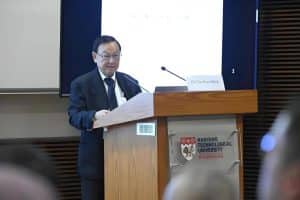
Photo: Professor Cheng Wenqing, Honorary Consultant Orthopedics, Singapore General Hospital. Source: Lianhe Zaobao
His shared clinical data proved particularly compelling: A collaborative study by Singapore General Hospital, the Mayo Clinic in the United States, and the School of Chinese Medicine at Jinan University in China found that Tuina and physical therapy are equally effective in relieving lower back pain, while combining both enhances recovery efficiency.
Moreover, Dr. Zhang Yibin, Chairman of the Singapore Chinese Medicine Council, revealed that massage therapy has been integrated into the treatment protocols for musculoskeletal disorders and chronic pain at Singapore General Hospital and Tan Tock Seng Hospital. This signifies that TCM is no longer a “discretionary alternative” but has become an established component within the healthcare system.
In essence, Singapore is actively incorporating TCM into its national healthcare landscape. This move responds to patient needs while strategically positioning the country for future health initiatives.
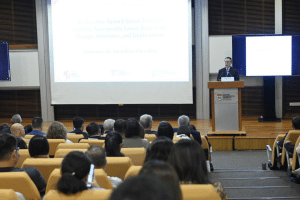
Photo: Dr. Zhang Huibin, Chairman of the Singapore Chinese Medicine Board, Source: Lianhe Zaobao

II. The Silver Tide:
The Importance and Opportunities of Traditional Chinese Medicine
But why has TCM suddenly gained such prominence in Singapore? The answer lies in a major trend: the accelerating pace of an aging society.
According to Singapore’s National Statistics Bureau, by 2030, one in every four Singaporeans will be over 65. The most common issues among the elderly are chronic diseases: diabetes, arthritis, cardiovascular diseases, insomnia, anxiety… These conditions often cannot be “cured” at their root but require long-term management. While Western medicine excels at “emergency care,” it struggles with chronic disease management.
This is where the value of Traditional Chinese Medicine (TCM) becomes evident. Acupuncture, massage therapy, herbal medicine, and practices like Tai Chi and Baduanjin not only demonstrate significant therapeutic effects but also carry low side effects and high patient acceptance. More crucially, the elderly require holistic solutions for “healthy living” rather than constant hospital visits and long-term reliance on medication.
Experts note that many of Singapore’s health policies still center on “burning calories” as a core metric, such as daily step goals. While young people may easily meet these targets, older adults who blindly pursue them risk knee injuries or even cardiac strain.
In contrast, practices like Tai Chi, health exercises, brisk walking, and Guided Movement better suit seniors’ physical conditions and align with TCM’s philosophy of “health preservation through balance.”
In other words, an aging society makes TCM not merely an “option” but a necessity. This is the primary context behind TCM’s growing prominence within Singapore’s healthcare ecosystem.
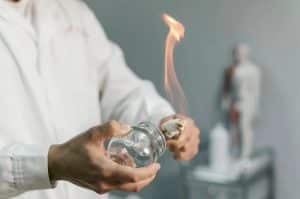
Source: TCMPB, for illustrative purposes only; not medical advice

III. The Rising Value of TCM Practitioners:
A Critical Step in Healthcare Reform
Clinical cases demonstrate TCM’s unique value across multiple domains.
For instance, local Singaporean media reported on a woman suffering from 20 years of “premenstrual migraines.” After multiple unsuccessful treatments, she found significant pain relief within just five days of taking a TCM formula designed to “soothe the liver and resolve depression.”
This is not an isolated case. Whether addressing gynecological issues, migraines, insomnia, skin conditions, stroke rehabilitation, or emotional disorders, TCM has demonstrated efficacy and distinct advantages.
More notably, Singapore is actively promoting the integration of Chinese and Western medicine. The collaboration between Parkway Santon Hospital and Eu Yan Sang is a prime example: through a co-management model combining Chinese and Western medicine, patients receive more comprehensive treatment plans within the same setting.
In medical education, Singaporean experts are increasingly advocating that TCM practitioners should hold dual qualifications—proficient in both Chinese and Western medicine—to ensure seamless collaboration with Western physicians in hospitals. This mirrors the dual-track training model adopted by Chang Gung University in Taiwan.
It is foreseeable that Singapore’s TCM industry will evolve toward “professionalization, standardization, and internationalization.” This trajectory aims to preserve the distinctive features of TCM while integrating it with modern medical practices.
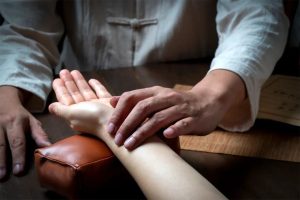
Source: TCMPB. For illustrative purposes only. Not intended as medical advice.

IV. Global Perspective:
Hong Kong and the World’s Recognition of Traditional Chinese Medicine
Singapore is not alone in this endeavor. In fact, numerous regions worldwide are rediscovering the value of TCM.
Take Hong Kong, China as an example: its first dedicated TCM hospital is slated to open in December 2025, with an anticipated annual outpatient volume of 400,000 visits. The facility will feature 400 beds, 70 consultation rooms, and 45 treatment rooms, offering comprehensive TCM services including internal medicine, surgery, gynecology, pediatrics, orthopedics, and acupuncture.
This signifies TCM’s evolution from “clinics” to “comprehensive hospitals,” now undertaking inpatient care, research, and talent cultivation functions.
On the international stage, the World Health Organization (WHO) has incorporated TCM into the International Classification of Diseases, 11th Revision (ICD-11). Institutions like the Mayo Clinic in the US, Heidelberg University in Germany, and the University of Tokyo in Japan are actively conducting research on acupuncture and herbal medicine.
It can be said that TCM has transcended cultural boundaries to become a vital complement to global healthcare systems. For Singapore, this presents both an opportunity and a driving force: meeting local demand while positioning itself as a regional hub for TCM in Southeast Asia.

Source: TCMPB. For illustrative purposes only. Not intended as medical advice.

V. Practical Guide:
How to Open a Traditional Chinese Medicine Hospital in Singapore
At this point, many may ask: With such promising prospects, can I open a TCM clinic in Singapore? The answer is yes—but it must be compliant, professional, and done step by step. Here are the key steps:
1. Practitioner Licensing
TCM practitioners in Singapore are regulated by the Traditional Chinese Medicine Practitioners and Herbalists Board (TCMPB). To become a qualified practicing TCM practitioner, you must meet the following requirements:
Pass the TCMPB registration examination (including written test and clinical interview);
Hold an accredited degree in Traditional Chinese Medicine (e.g., from mainland China or Taiwanese TCM institutions; certain Singaporean and international programs are also recognized);
Maintain good professional conduct with no record of major violations;
After registration, participate in Continuing Medical Education (CME) regularly to maintain license validity.
In other words, practicing without a license is illegal—this is a legal red line.
2. Business License and Location Selection
① To establish a TCM clinic, concurrent applications are required for:
Business license (ACRA-registered company/sole proprietorship);
Medicinal Herbs Management License approved by the Health Sciences Authority (HSA) (if selling Chinese herbal medicines);
Shop license (approved by the Urban Redevelopment Authority URA and Housing Development Board HDB), with particular attention to the distinction between residential and commercial zones;
Fire and Safety Approval (SCDF), especially for facilities using acupuncture or electrotherapy equipment.
② For location selection, typically consider:
Ground-floor HDB shop units: Convenient for community residents with stable clientele;
Medical complexes/clinic floors: More professional, facilitating collaboration with Western medicine practitioners;
Downtown office districts: Serving white-collar workers with high demand for treatments like cervical spondylosis and frozen shoulder.
3. Key Practice Management Points
Compliant Documentation: Maintain clear records for acupuncture, massage, and herbal medicine treatments; medical records must comply with TCMPB requirements.
Bilingual Communication: Use both English and Chinese to facilitate understanding across diverse patient groups.
Insurance Partnerships: Some insurers now cover TCM treatments, enhancing competitiveness.
Specialized Services: Differentiated offerings like “Gynecological Wellness Clinics,” “Stroke Rehabilitation Clinics,” or “Community Wellness Programs” help stand out.
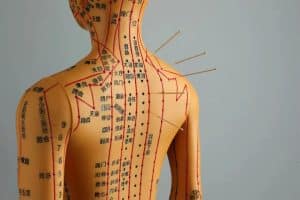
Source: TCMPB (for illustrative purposes only; not medical advice)
4. Long-Term Development
Future Singapore TCM hospitals will evolve beyond mere “treatment centers” into:
Community Health Hubs (offering Tai Chi, Baduanjin classes);
Research Collaboration Hubs (participating in clinical trials to gain international recognition);
Talent Incubation Bases (partnering with universities to train TCM practitioners).
In summary: Compliance + Expertise + Distinctiveness = The formula for success in establishing a TCM hospital in Singapore.
Conclusion: TCM’s Singapore Story
From official endorsement to expert advocacy, from the needs of an aging society to the trend of international healthcare, TCM is experiencing unprecedented development opportunities in Singapore.
It is no longer merely a continuation of traditional culture but has become an indispensable part of the national healthcare system. For patients, TCM means more choices and fewer side effects; for society, it signifies reduced healthcare costs and improved overall health levels; for investors and practitioners, it represents a rapidly expanding blue ocean market.
Therefore, if you are contemplating the future direction of your health career or seeking to establish a business in Singapore, Traditional Chinese Medicine may be the most promising avenue worth exploring.
The silver wave is inevitable, but harnessing the wisdom of TCM, we can transform it into a “wellness revolution.”
Kindly note: The above information is for reference only. If you experience discomfort, seek medical attention promptly.
If you wish to open a TCM clinic or obtain a TCM practitioner license, contact us. Our account managers will assess your needs and provide tailored overseas solutions.
Note: Reference materials sourced from Singapore’s TCMPB, ACRA, HAS, URA, HDB, SCDF, GoBusiness, Lianhe Zaobao, and compiled from comprehensive news reports. Reproduction requires attribution; contact us for removal if infringing…….
